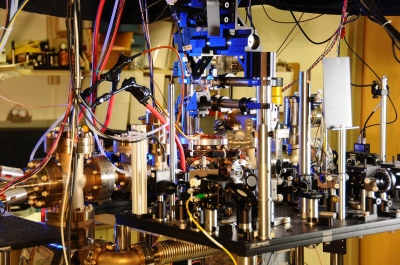The secret behind and ant’s gravity-defying grip!

We see them everywhere on the floor, up the ceiling, inside the sugar jar, outside the half-open pouch of a half-eaten snack... Ants are moving constantly, on different surfaces, and make it look so very easy. How do they do it? A biologist studying ants for three decades tells us how.
Ants have six feet, and each foot has five jointed segments. Each of these segments has spines and hairs, which provide the ants traction on rough surfaces such as barks. The last segment also has a pair of claws that help with a good grip on irregular surfaces. Together, both spines and claws act like our shoes – protect ants from hot and sharp objects. But the true magic of how ants conquer almost any surface lies between their claws.
Located between each pair of their claws is an inflatable sticky pad called arolium (plural arolia). When an ant climbs a wall or walks across a ceiling, gravity will pull it. But before that happens, its "leg muscles pump fluids into the pads at the end of its feet, causing them to inflate". This sticky fluid-called hemolymph- is similar to our blood and circulates throughout its body. A little bit of this liquid oozes out of the arolium when an ant places its leg on the surface, allowing it to stick to the surface. And when it removes its leg from the surface, the leg muscles contract and absorb the liquid back in the body. So, the liquid is used over and over again. Since ants are light-weight, these six pads are adequate enough to give them their gravity-defying grips on any surface "In fact, at home in their underground chambers, ants use their sticky pads to sleep on the ceiling By sleeping on the ceiling, ants avoid the rush hour traffic of other ants on the chamber floors.’’
Did you know?
When we walk, our left and right feet alternate, meaning one foot is on the ground and the other in the air to help us move forward. Ants do the same thing too- when they move, three of their legs are on the surface and three in the air at a time.
Picture Credit : Google



